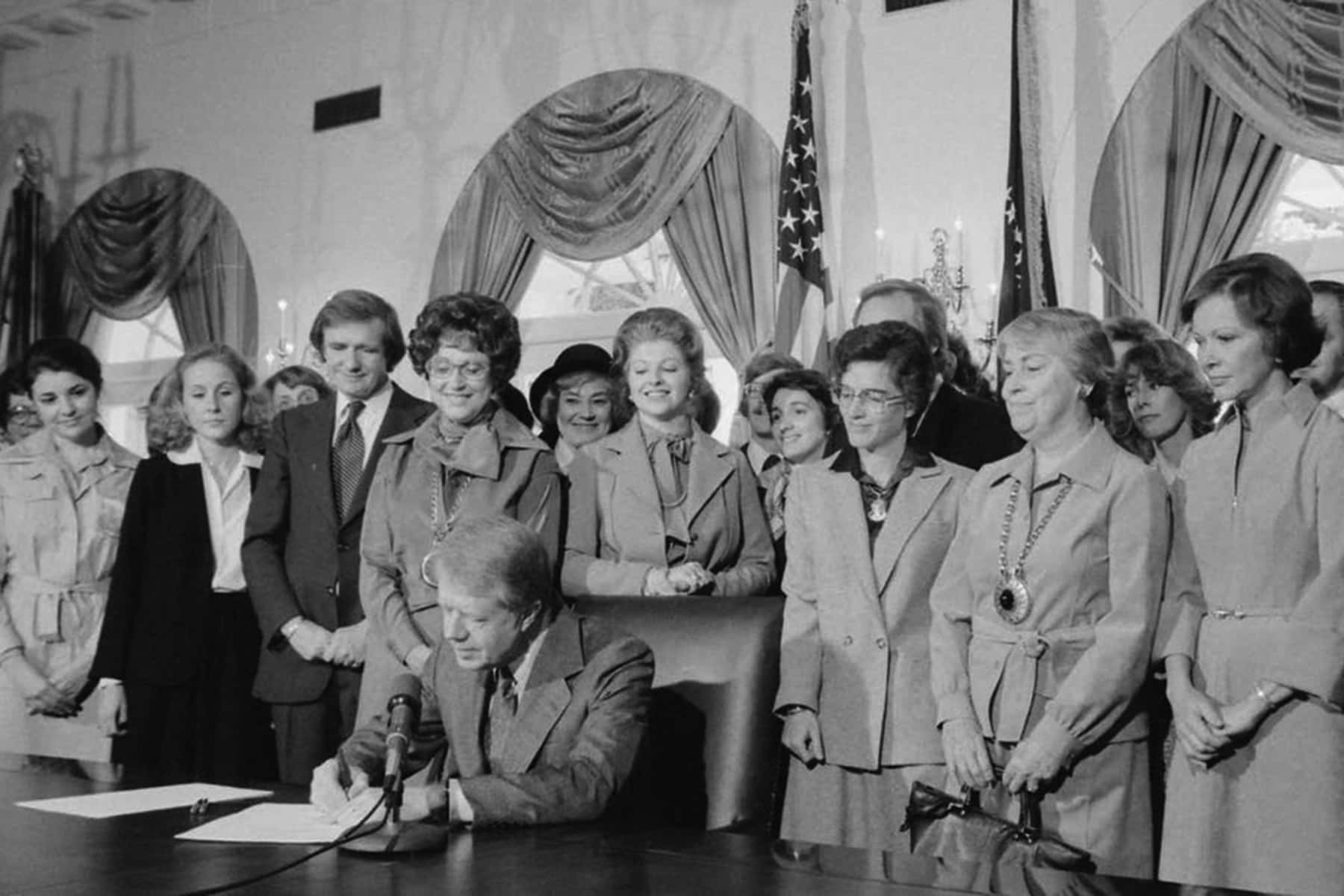
By Deana Rohlinger, Professor of Sociology, Florida State University
Over nine decades, efforts to amend the U.S. Constitution to recognize women’s rights have faced major challenges. Congress finally passed such legislation, known as the Equal Rights Amendment, in 1972.
The amendment would recognize women’s equal rights to men under the law.
Despite concerted campaigns by women’s rights groups, it fell short of the 38 states that needed to ratify it in order for it to become part of the Constitution. The original deadline for states to ratify was 1979. Congress extended the deadline to 1982, but even then it still fell three states short of passage.
Nevertheless, women’s rights activists have continued working to get states to ratify it.
Many ERA proponents argue that the deadline is irrelevant because the 27th Amendment to the Constitution, which prohibits changes to the salaries of congressional legislators, was ratified in 1992, 203 years after it was introduced. The same could happen to the ERA, they argue. They maintain that Congress has the power to change the deadline and recognize the 38 ratification votes to approve the amendment.
Some constitutional experts, however, argue that it may be too late, since the deadline passed more than three decades ago. They also suggest that, while its passage would have symbolic importance, the ERA might only make a difference at the margins where the law still allows sex discrimination.
I’m a scholar who studies gender and politics. Here’s a quick summary of how the country got to this point and the barriers that still exist to adding the Equal Rights Amendment to the Constitution.
‘Ladies against women’
Women’s rights advocates argue that sex discrimination is a pervasive problem that could be resolved by the ERA. Even though the Equal Protection Clause in the 14th Amendment prohibits states from denying any person equal protection under the law, women’s rights are not explicitly guaranteed.
The push for equal rights heated up in the 1920s after women gained the right to vote. Alice Paul, a suffragette, proposed the first version of an Equal Rights Amendment in 1923. The proposal was adopted and turned into proposed legislation by two Kansas Republicans, Sen. Charles Curtis and Rep. Daniel Anthony Jr., and was brought up during every congressional session between 1923 and 1971 without success.
The idea of an Equal Rights Amendment, however, gained momentum among politicians and the broader public. World War II opened many doors for women, who filled gaps in the labor force while men were off fighting. During this time, women were welcomed into politics, onto juries, openly wooed by educational institutions and encouraged to take up male-dominated majors such as math, science and technology.
By 1970, the Equal Rights Amendment had been endorsed by four sitting presidents – Republicans Dwight D. Eisenhower and Richard Nixon, and Democrats John F. Kennedy and Lyndon Johnson. The fledgling feminist group, the National Organization for Women, adopted the passage of the ERA in its 1967 Bill of Rights for Women and began staging massive demonstrations and lobbying politicians in the late 1960s and early 1970s in an effort to get Congress to pass the amendment.
Finally, in 1972, the ERA passed both houses of Congress. The Amendment would have seven years to be ratified by three-fourths, or 38, of the 50 states. While 30 states ratified the ERA in 1972 and 1973, the amendment ultimately came up three states short of approval by the 1979 deadline.
This was in large part due to the efforts of conservative women’s organizations such as Eagle Forum and Concerned Women for America that opposed it. Conservative women regarded the ERA as a threat to the family and child-rearing because it would disrupt traditional gender roles. They also believed women would lose, among other things, their exemptions from the draft and combat duty.
States such as Illinois and Florida became battlegrounds for liberal and conservative women fighting over the amendment. Feminists successfully lobbied Congress to extend the ERA’s ratification deadline to June 30, 1982. The ERA, however, was not ratified by the three states needed to ensure its passage. In 1982, conservative women proclaimed the Equal Rights Amendment officially dead.
Another chance?
A number of recent events have put the ERA back on the political agenda: high-profile allegations of sexual assault, the #MeToo movement and, among other issues, increasing restrictions on women’s access to abortion.
Since 2017, two more states – Nevada and Illinois – have ratified the Equal Rights Amendment. Supporters are now rallying support in Virginia, hoping it will the next and final state to ratify it in 2019.
At the same time, for a number of reasons, Nebraska, Tennessee, Idaho, South Dakota and Kentucky rescinded their ERA ratifications between 1972 and 1982. Some state legislators argued that the amendment was too controversial given its potential to upend traditional gender roles and legalize what they called “abortion on demand.”
So, even if Virginia legislators ratify the amendment, the fate of the Equal Rights Amendment is unclear. The Supreme Court could weigh in on whether these reversals should impact the amendment’s addition to the Constitution. But, it is not clear that it would. In fact, the Supreme Court opted not to rule on a rescinded ratification in 1939 on the Child Labor Amendment whose ratification period had expired.
Likewise, it’s unclear how Congress will respond since the amendment expired decades ago. Congress certainly has the power to ignore the five rescinded ratifications – it has done so in the past. But, in a highly polarized political environment, that may prove difficult.
National Archives / U.S. Library of Congress
Originally published on The Conversation as In 2019, women’s rights are still not explicitly recognized in US Constitution
Support evidence-based journalism with a tax-deductible donation today, make a contribution to The Conversation.














